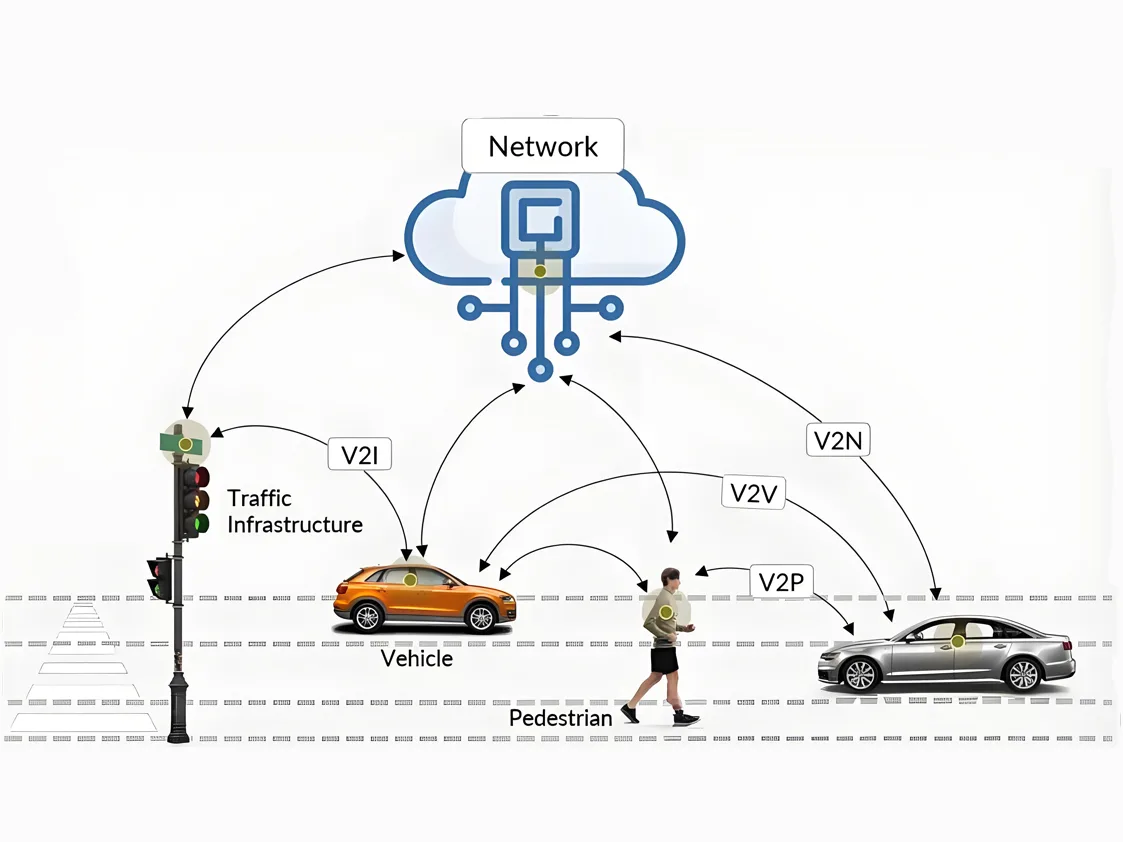La rivoluzione tecnologica e le opportunità di mercato per le antenne automobilistiche
L'industria automobilistica globale sta subendo uno spostamento trasformativo verso l'elettrificazione, intelligenza, e connettività. Secondo i rapporti di mercato verificati, Il mercato delle antenne intelligenti automobilistiche dovrebbe crescere 3.2Billionin2022to5.6 miliardi di 2030, in un CAGR di 8.5%. Questa crescita è guidata dai progressi nella guida autonoma, 5Comunicazione G-V2X, e fusione del sensore. Le moderne antenne automobilistiche si sono evolute dai ricevitori AM/FM di base in sistemi multifunzionali a supporto della comunicazione multiband, Posizionamento ad alta precisione, e latenza ultra-bassa.

Questo articolo esplora le innovazioni all'avanguardia nella tecnologia delle antenne automobilistiche, sfide critiche in Progettazione di circuiti stampati, e tendenze future, Supportato da Insights Market, Principi tecnici, e casi studio ingegneristici.
Categorie tecniche di antenne automobilistiche & Innovazioni di integrazione del PCB
Miniaturizzazione e prestazioni ad alta frequenza nelle antenne planare
Le antenne planari dominano i moderni progetti di veicoli a causa del loro basso profilo e architettura a misura di integrazione. Un tipico Antenna patch di microstrip è costituito da una patch radiante, substrato dielettrico, e piano di terra che opera attraverso le frequenze dal GPS (1.575 GHz) al radar a onde millimetriche (77–81 GHz).
Esempio di rottura:
- Antenne patch impilate: PCB multistrato Lo stacking aumenta la larghezza di banda di 15% ridotto l'interferenza incrociata di polarizzazione, Ideale per le comunicazioni satellitari e 5G-V2X.
- Banda ultra-larga (Uwb) Antenne: Operando a 3,1-10,6 GHz, Questi consentono il posizionamento di livello centimetro per l'ingresso senza chiave e i sistemi di evitamento delle collisioni. I progetti di PCB richiedono materiali ad alta frequenza come Rogers RO4350B e simulazione elettromagnetica per dimensioni ottimali di patch.
Progettazione adattiva di antenne non piantatrici per ambienti complessi
IL Antenna di pinna di squalo Esemplifica la progettazione non pianificata, Integrazione del GPS, Wifi, 4Moduli G/5G, e tecnologia MIMO. Ad esempio, Un modello di veicolo di lusso presenta un'antenna a pinna di squalo a 8 elementi. 1 Throughput GBPS tramite LTE 4 × 4 MIMO.
Sfide ingegneristiche & Soluzioni:
- Riduzione dell'accoppiamento reciproco:
- Isolamento spaziale: Spaziatura verticale > L/4 (per esempio., 12.7 mm at 5.9 GHz).
- Diversità di polarizzazione: Polarizzazione verticale ibrida/orizzontale.
- Ottimizzazione del terreno: Strutture di terra difettate (DGS) SU PCB sopprimere le onde di superficie.
Array radar a onde millimetriche: The “Visual Cortex” of Autonomous Driving
24 GHz e 77 I radar a onde millimetriche GHZ sono fondamentali per ADAS. A 77 GHz (lunghezza d'onda: 3.9 mm), Gli array a fasi consentono il rilevamento a lungo raggio. Un array di patch microstrip 4 × 4 raggiunge uno sterzo a fascio di ± 45 ° con larghezza del fascio a 8 ° e intervallo di 250 metri.
Requisiti chiave del PCB:
- Substrati per la perdita ultra-bassa (per esempio., Ptfe).
- Allineamento traforato laser per precisione.
Formula di sterzo del raggio:
La regolazione della fase dinamica abilita le prestazioni in tempo reale per il monitoraggio dei pedoni/veicoli.
Sfide tecniche e innovazioni nella progettazione di PCB
Selezione ed elaborazione dei materiali ad alta frequenza
I PCB a onde millimetriche richiedono un controllo stretto della costante dielettrica (Dk ± 0,05) e perdita tangente (Df <0.002). Rogers Ro3003 (DK = 3.0, temp. coefficiente: -3 ppm/° C.) è ampiamente adottato. L'incisione al plasma garantisce la rugosità del bordo della linea di trasmissione <1 μm.
Tecnologia PCB flessibile per antenne conformi
PCB flessibili (FPCS) adattarsi alle superfici curve. L'antenna FPC a forma di banda a forma di pentagramma a pentagramma della Cina della Cina orientale utilizza substrati di poliimmide (0.1 spessore mm) e simulazioni Feko da raggiungere 2.3 db guadagno a 2.4 GHz. La mancata corrispondenza dell'impedenza indotta dalla piega viene mitigata tramite tracce di serpentina o strati dielettrici a gradiente.
EMC e gestione termica
Chiudere la vicinanza dell'antenna (per esempio., 30 cm tra il radar di pinna di squalo e adas) provoca interferenza (-15 DBM). Le soluzioni includono:
- Cavità di protezione: Metallizzati tramite array Crea gabbie faraday.
- Pianificazione della frequenza: Separato 5.9 GHZ Comms e 77 Bande radar GHZ.
- Simulazione termica: Ansys Icepak ottimizza la distribuzione della densità di potenza.
Tendenze future: Dai componenti funzionali ai nodi intelligenti
5G-V2X e riconfigurazione dinamica guidata dall'AI
Post-2025, 5G-V2X consegnerà 20 Velocità GBPS e 1 latenza MS. Antenne dinamicamente riconfigurabili (Disegnato) L'uso di diodi pin o switch MEMS abilita la commutazione della banda di frequenza automatica (per esempio., 700 MHz in tunnel).
Rivoluzione materiale: Metasurfaces e cristalli fotonici
Antenne metamateriali con indici di rifrazione negativi si riducono le dimensioni a λ/10. A raggiungimento dell'antenna metamateriale su PCB di Yokowo 5 DBI guadagno a 2.4 Ghz con 1.2 spessore mm. I substrati di cristalli fotonici sopprimono le onde di superficie, Aumentando l'efficienza a >85%.
Design modulare PCB e aggiornamenti OTA
Tesla’s patented “Antenna Matrix” supports OTA beam pattern updates. Lo sterzo del raggio a base di AIT Ottimizza la comunicazione V2i, abilitato da PCBS HDI con 30/30 linea/spazio μm.
Conclusione: Trasformazione del settore attraverso la convergenza tecnologica
PWC prevede 55% di nuovi veicoli saranno elettrici 2030, con 40% di miglia guidate autonomamente. Le antenne automobilistiche si stanno evolvendo in nodi intelligenti all'interno delle reti di trasporto intelligenti. Successo in questo $1 Trilioni di mercati dipende da scoperte in miniaturizzazione, Efficienza energetica, e collaborazione multidisciplinare tra progettisti di PCB, Ingegneri RF, e scienziati materiali.
Questo articolo esplora le innovazioni all'avanguardia nella tecnologia delle antenne automobilistiche, Sfide critiche nella progettazione di PCB, e tendenze future, Supportato da Insights Market, Principi tecnici, e casi studio ingegneristici.